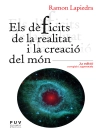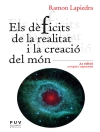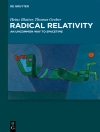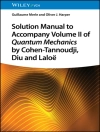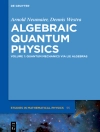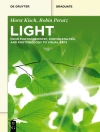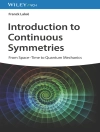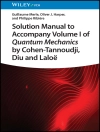This book reviews the construction of elementary systems living in de Sitter (d S) spacetime, in both the classical and quantum senses. Field theories on d S spacetime are among the most studied mathematical models of the Universe, whether for its earlier period (inflationary phase) or for its current phase of expansion acceleration (dark energy or cosmological constant). Classical elementary systems are Hamiltonian phase spaces, which are associated with co-adjoint orbits of the relativity group. On the other hand, quantum elementary systems are associated with (projective) unitary irreducible representations of the (possibly extended) relativity group (or one of its covering). This study emphasizes the conceptual issues arising in the formulation of such systems and discusses known results in a mathematically rigorous way. Particular attention is paid to: “smooth” transition from classical to quantum theory; physical content under vanishing curvature, from the point of view of a local(“tangent”) Minkowskian observer; and thermal interpretation (on the quantum level), in the sense of the Gibbons-Hawking temperature. Such a mathematical construction is of paramount importance to the understanding of the early Universe (due to the critical role that the d S metric plays in the inflationary cosmological scenarii) as well as to the construction of possible models for late-time cosmology (since a small positive cosmological constant or dark energy seems to be required by recent data). In this sense, this book uniquely blends mathematical physics (spacetime symmetry on classical and quantum levels) and theoretical physics (quantization, quantum field theory, and cosmology). Moreover, the level of exposition varies in different parts of the book so that both experts and beginners alike can utilize the book.
Jadual kandungan
Introduction.- Preliminary: 1 + 1-dimensional d S (d S
2) Geometry and Relativity.- 1+3-dimensional d S (d S
4) Geometry and Relativity (Classical and Quantum Mechanics).- 1+3-dimensional d S (d S
4) Geometry and Relativity (QFT).- Notion of Mass in (A)d S
4 Relativity.
Mengenai Pengarang
Mohammad Enayati, Ph.D., is a Resident Researcher at Razi University where he received his Ph.D. in theoretical physics in 2017. His research interests include group-theoretical methods in physics, with an emphasis on de Sitter (spacetime) symmetry considerations on both classical and quantum levels.
Jean-Pierre Gazeau, Ph.D., is an Emeritus Professor at the University Paris Cité. He was chairman of the Standing Committee of the International Colloquium on Group Theoretical Methods in Physics from 2006 to 2014. He obtained his academic degrees from Sorbonne University and Pierre-and-Marie Curie University. He has authored more than 230 scientific publications, including three books, in theoretical and mathematical physics, mostly devoted to group theoretical methods in physics, coherent states, quantization methods, and number theory for aperiodic systems.
Hamed Pejhan, Ph.D., is a Postdoctoral Fellow at Zhejiang University of Technology He received his degree in mathematical physics from Azad University in 2015. His scientific interests revolve around the application of group theoretical methods in physics, with particular attention to developing a consistent formulation of quantum elementary systems in (anti-)de Sitter spacetime.
Anzhong Wang, Ph.D., is a Professor in the Physics Department at Baylor University. His research interests include quantum cosmology and black holes; gravitational waves and their applications to cosmology; and classical and quantum theories of gravity and their applications to astrophysics and cosmology. He has published more than 260 articles and received approximately 8, 000 citations.



